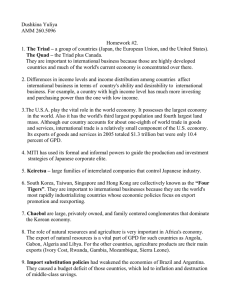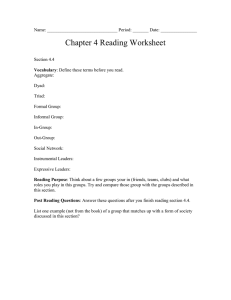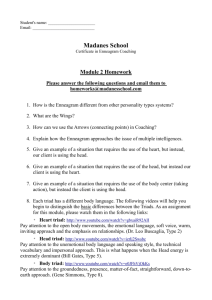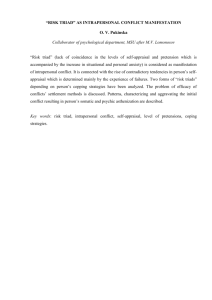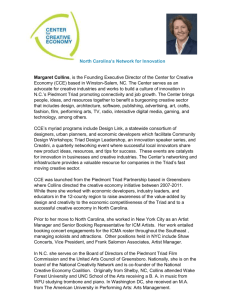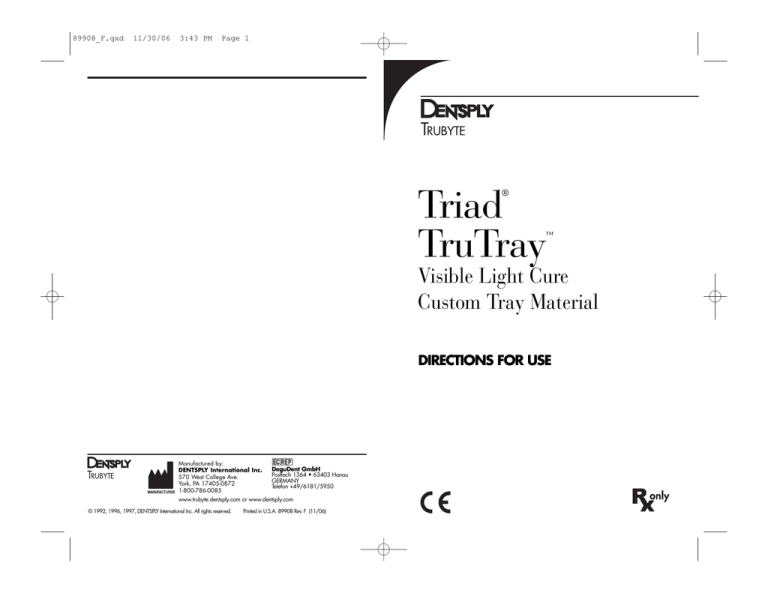
89908_F.qxd
11/30/06
3:43 PM
Page 1
Triad
TruTray
®
™
Visible Light Cure
Custom Tray Material
DIRECTIONS FOR USE
Manufactured by:
DeguDent GmbH
DENTSPLY International Inc.
Postfach 1364 • 63403 Hanau
570 West College Ave.
GERMANY
York, PA 17405-0872
Telefon +49/6181/5950
1-800-786-0085
www.trubyte.dentsply.com or www.dentsply.com
© 1992, 1996, 1997, DENTSPLY International Inc. All rights reserved.
Printed in U.S.A. 89908 Rev. F (11/06)
89908_F.qxd
11/30/06
3:43 PM
Page 3
and vacuum systems should be
used.
Indications for Use:
Triad TruTray Custom Tray Material is
indicated for the fabrication of custom
prosthodontic impression trays. Triad
TruTray may be used for any impression
situation: dentulous, edentulous or partially edentulous.
3. All cure times cited are appropriate
for Triad 2000 and Triad II curing
units. Consult your Technical
Manual or call Technical Support
for Triad I cure times.
4. Store Triad Materials at or below
24°C/75°F and away from direct
sunlight. Triad Materials may be
refrigerated to extend shelf life.
Triad TruTray is a pre-mixed, visible
light cured material that does not contain methyl-methacrylate monomer.
TruTray has high dimensional stability
(elastic modulus of > 1,500,000
PSI/10,500 MPa) and very low shrinkage, providing excellent adaptation.
5. Unused Triad Materials should be
polymerized prior to disposal.
6. Do not use Triad Materials that
crack or craze when handled.
Contraindications:
Triad TruTray Custom Tray Material is
contraindicated for patients and users
with a history of allergic reaction to a)
urethane resins; and/or b) methylmethacrylate monomer (contained in
Triad VLC Bonding Agent only).
Adverse Reactions:
1. Allergic contact dermatitis and
other allergic reactions may occur
in susceptible individuals.
2. Dust will be generated when grinding Triad Materials. Eye, skin and
respiratory irritation may occur if
appropriate engineering controls
are not used.
Warnings:
1. Triad TruTray Custom Tray Material
and Triad VLC Bonding Agent contain polymerizable monomers
which may cause skin sensitization
(allergic contact dermatitis) or other
allergic reactions in susceptible
persons. Wash thoroughly with
soap and water after contact. If
skin sensitization occurs, discontinue use. If dermatitis or other symptoms persist, seek medical advice.
border slightly beyond the final outline extent and fold the edge back
on itself (Figure 1). This technique
will leave a smooth, “rolled border” effect, and total custom tray
fabrication time will be reduced.
STEP-BY-STEP INSTRUCTIONS
1. Obtain a properly extended primary cast. The cast may be marked
with a pencil line as a guide to tray
extension, if desired.
2. Follow your normal procedures for
block-out of soft or hard tissue
undercuts to prevent the tray from
being locked onto the cast.
6. Attach a handle by molding excess
material into shape and blending
edges into the truTray Material on
the cast, with the Triad Modeling
Tool.
3. Place relief wax and “cut-outs” for
tray stops, as appropriate for the
situation.
7. Cure the cast with its adapted tray
in the Triad Curing Unit for two (2)
minutes.
4. When the block-out and relief steps
are complete, coat all surfaces
which will contact TruTray Custom
Tray Material with a thin layer of
Triad Model Release Agent (MRA).
The Triad MRA will facilitate separation of the tray from the cast.
8. Remove the cast from the unit and
carefully separate the partially
cured tray from the cast. Remove
any relief wax from the tray while it
is still warm.
9. Cover all surfaces of the custom
tray with Triad Air Barrier Coating
(ABC) and return to the Triad
Curing Unit for two (2) minutes.
5. Remove the rayon film from the
TruTray and carefully adapt the
material to the cast. Trim the material with a scalpel, knife or other
sharp instrument to the desired outline form, and remove excess material. To eliminate the need for grinding and polishing, trim the TruTray
10. Remove the custom tray when the
cycle is complete. Scrub gently with
warm water and a brush to remove
all traces of Triad ABC.
NOTE:
For immediate use without adhesive,
create mechanical retention by perforating the custom tray with an appropriate instrument prior to curing. No
grinding will be necessary.
Precautions:
1. Users with special skin problems,
cuts, or abrasions should wear protective gloves.
2. When grinding prosthodontic
resins, proper ventilation, masks
1
2


